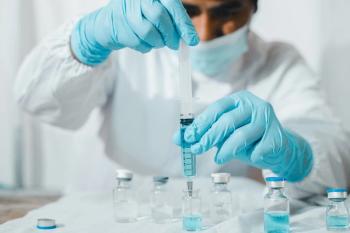At the 2025 Controversies in Modern Eye Care meeting, which took place May 4, in Los Angeles, California, Steven Ferrucci, OD, FAAO, chief of optometry at the Sepulveda VA Hospital in Los Angeles and professor at Marshall B. Ketchum University, shared his excitement about advancements in retinal disease treatment, particularly for geographic atrophy (GA), in an interview. His insights are a powerful reminder that the therapeutic landscape is evolving rapidly, bringing new hope for patients once considered untreatable.
New FDA-approved therapies for geographic atrophy
Key takeaways
- 2 FDA-approved drugs now offer treatment options for GA, a disease affecting more patients than previously recognized.
- Gene therapies may transform care for retinal diseases, potentially reducing treatment frequency to a single injection.
- The Valeda System and Encelto represent novel tools in the optometrist’s arsenal, expanding treatment possibilities for previously untreatable conditions.
- Staying informed is essential. As Ferrucci emphasized, “There’s a lot of stuff out there… for patients that previously we couldn’t treat, or had no hope for—we now do.”
Geographic atrophy, the advanced form of dry age-related macular degeneration (AMD), is now receiving long-awaited attention. According to Ferrucci, 2 medications approved by the US Food and Drug Administration (FDA) have demonstrated the ability to slow GA lesion progression over time. While the specific drugs were not named, this likely refers to pegcetacoplan (Syfovre; Apellis Pharmaceuticals) and avacincaptad pegol (Izervay; Astellas Pharma), both of which received FDA approval in 2023.
“GA is probably a little more common than we might think,” said Ferrucci. With over 1.5 million Americans affected—a number he suspects is underreported—these new therapies mark a significant shift in how optometrists can manage this chronic and previously untreatable condition.
The promise of genetic and onetime therapies
Ferrucci also highlighted the potential of gene therapy. In contrast to current anti-VEGF treatments that require frequent intravitreal injections, future gene-based therapies may allow for a single viral vector injection that transforms the eye into a long-term source of anti-VEGF expression. “It might be a one-and-done type thing,” Ferrucci noted, though some maintenance may still be required.
This approach could revolutionize treatment for diseases like wet AMD and diabetic retinopathy, improving patient adherence and reducing clinical burden.
Expanding horizons for retinal therapies
Optometrists should also be aware of newer treatment modalities, such as the Valeda Light Delivery System, a light-based therapy for dry AMD. Promising treatments for inherited retinal diseases like Stargardt disease and retinitis pigmentosa are also emerging. A newly approved treatment, Encelto, targets macular telangiectasia, a condition that previously had no effective interventions.
Final thoughts
Optometrists are on the front lines of detecting and managing retinal disease. With innovations coming fast, clinicians must remain vigilant and proactive in learning about these breakthroughs. As Ferrucci suggests, keeping “your ears open and your eyes open” may be the key to offering hope to patients we once thought were beyond help.










































